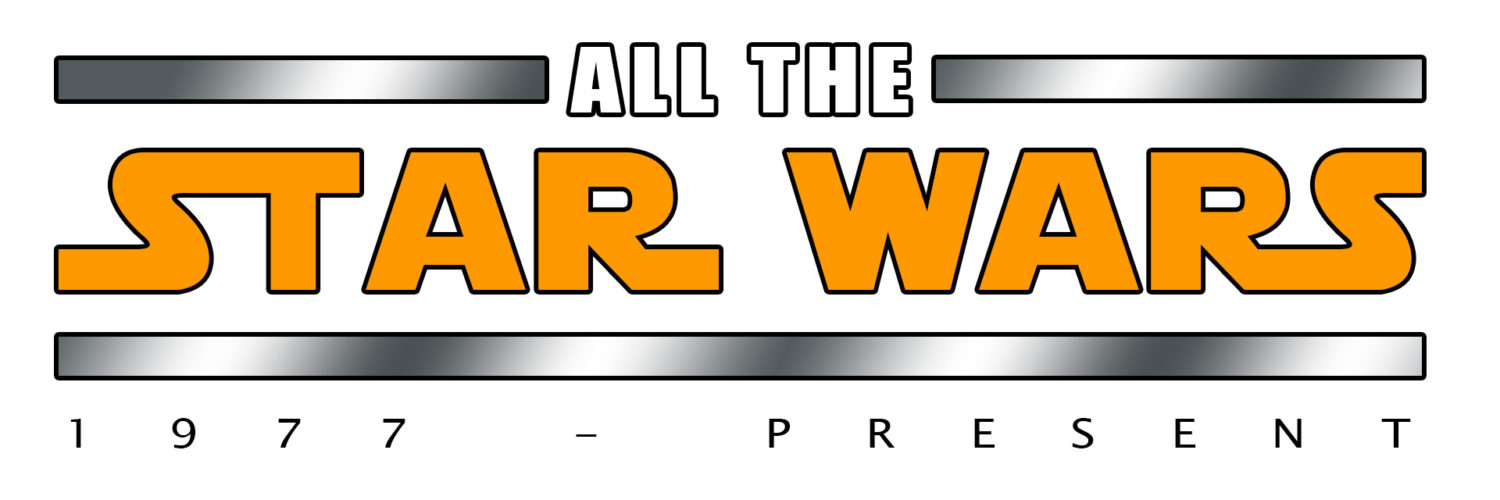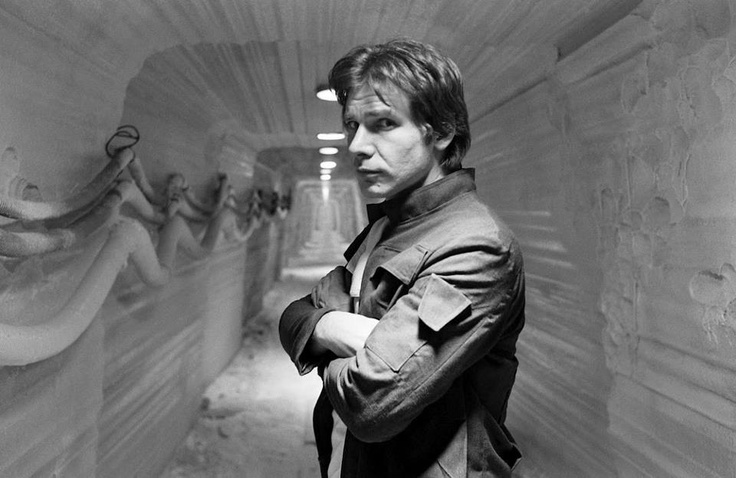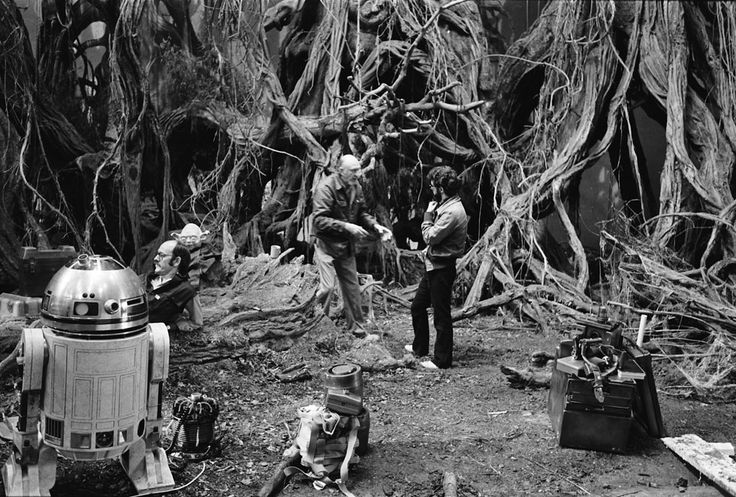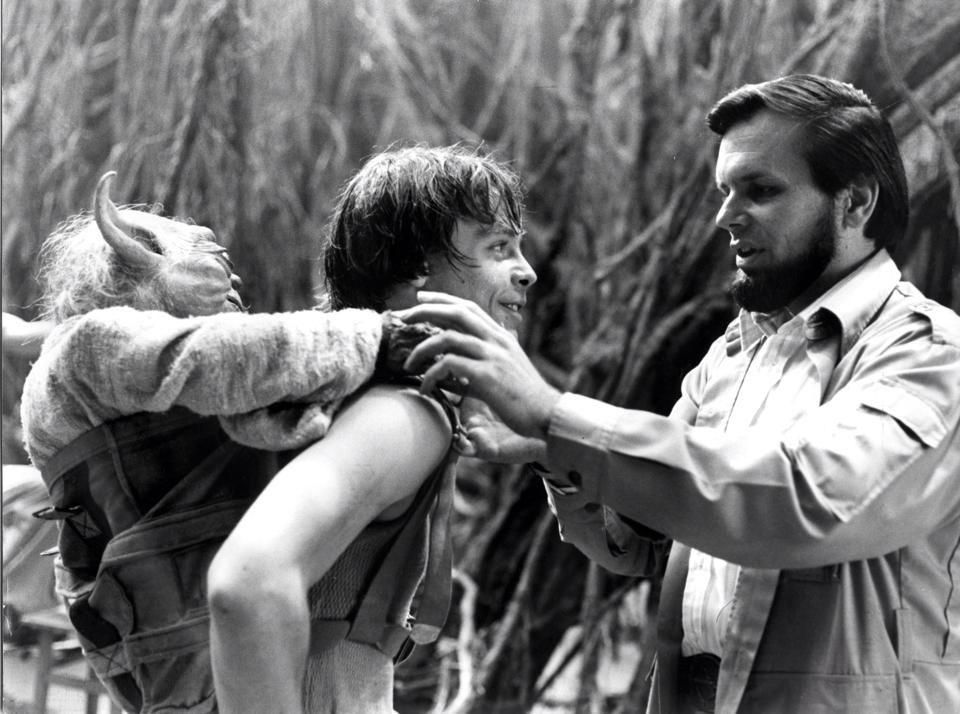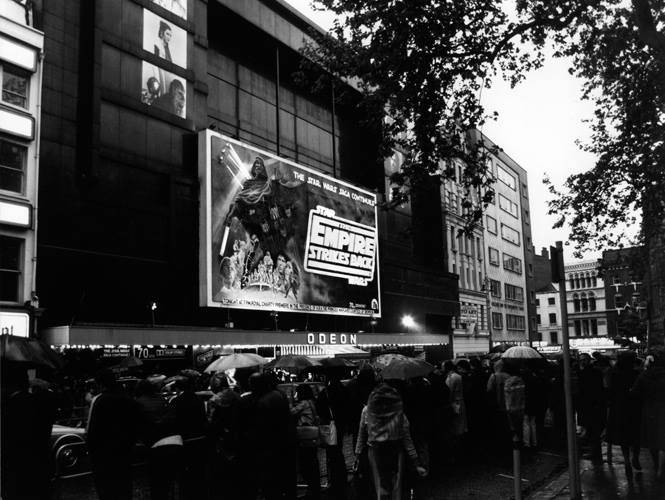
Today celebrates 38 years since the release of what I consider to be the greatest film ever made: The Empire Strikes Back. Released in 1980, Empire was the sequel to Star Wars and had a lot of pressure to be as good or better than its predecessor. A tall order considering Star Wars not only broke all box office records but also created a cultural phenomenon that hadn’t been seen since The Beatles.
What follows is some fascinating facts about the movie’s production, quotes from the cast and crew and behind-the-scenes photos of the greatest motion picture of all time.
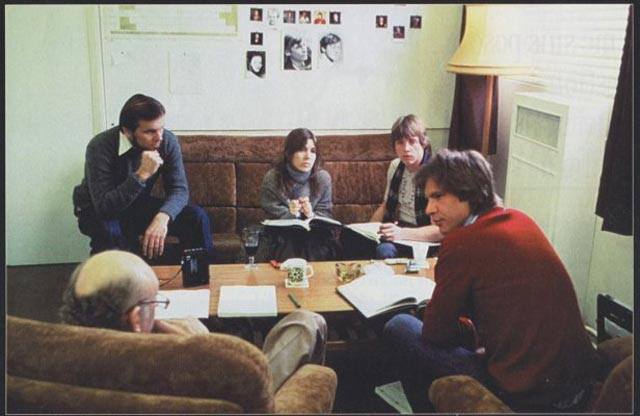
The year was 1977. Star Wars was the most successful movie of all time and by the end of the summer that year everyone wanted to know – when was the next Star Wars movie coming out? Creator George Lucas had plans in place before the original Star Wars was even released to make a low budget sequel as no one (himself included) thought Star Wars was going to do anywhere near as well as it did.
Lucas hired author Alan Dean Foster to write a follow-up story to Star Wars. It was a novel titled ‘Splinter of the Mind’s Eye‘ and was a stripped down story that focused on Luke Skywalker, Princess Leia and Darth Vader. It was set on a jungle planet and would be a low cost sequel to the first film.
After the success of Star Wars Splinter was scrapped as the sequel and released the following year (1978) as a novel only and promoted as part of the The Further Adventures of Luke Skywalker. Towards the end of 1977 Lucas and his producing partner, Gary Kurtz were already working on a big-budget follow-up to their smash hit film and knew that it had to be just as good as – if not better than – the original. Lucas (who hated writing) hired writer Leigh Brackett to pen the Star Wars sequel. The two began having meetings in late 1977 to discuss the story and it was in these meetings that the skeleton for Empire was constructed. In keeping with the Flash Gordon style serials Lucas grew up with as a kid, Empire was to be a very fast-paced movie with the heroes in a constant state of peril throughout. While this idea does translate to the final film we all know and love, ultimately the movie’s slower dramatic character development is what made it such a critical success and gave it the clout to be now regarded as one of the greatest cinematic stories of all time.
While this was something Lucas fought against during production, it was a battle he would eventually lose as director Irvin Kershner‘s style won out with substance trumping spectacle.
It was during Lucas & Brackett’s early story meetings that Han Solo‘s backstory was fleshed out by Lucas. As stated in The Annotated Screenplays by Laurent Bouzereau, ‘Han is an orphan and was raised by Wookiees on their planet. He left, flunked out of the Space Academy, and then met some kind of Ernest Hemingway character, a very powerful trader in the galaxy who took Han under his wing until they had a falling out. Han swore he’d never talk to him again’.
It will be interesting to see what of this original backstory ends up in the Solo film due to be released this same week on May 25th.
A couple of other ideas Lucas expressed during this time that can be seen in subsequent Star Wars films include Darth Vader living in a black castle surrounded by lava (Vader’s lair in Rogue One) and The Emperor caped and hooded in a cloth of gold (Snoke‘s outfit in The Last Jedi). While these ideas wouldn’t survive the next script treatment, they did inspire later Star Wars filmmakers who have since scoured Lucas’ notes for ideas and concepts for later Star Wars films.
Shortly after turning in the first treatment of the script in February of 1978, Leigh Brackett tragically died of cancer.
George Lucas: “Writing has never been something I have enjoyed, and so, ultimately, on the second film I hired Leigh Brackett. Unfortunately, it didn’t work out; she turned in the first draft, and then passed away. I didn’t like the first draft script, but I gave Leigh credit because I liked her a lot. She was sick at the time she wrote the script, and she really tried her best.”
The Empire Strikes Back‘s release date of May 1980 had already been announced which put Lucas under the gun to not only get the script finished but also finish the film on time. Not liking the draft Brackett had written Lucas had to sit down and re-write the script himself.
Originally The Empire Strikes Back was known as Episode II and not Episode V as it is known today. It wasn’t until Lucas’ second draft that the Episode numbers changed. This change was the impetus for what would later make Star Wars no longer Star Wars, but Episode IV: A New Hope. Realizing that he now had the potential to make more Star Wars movies Lucas decided that he would eventually create 9 movies in all including the prequel stories which would tell the story of Obi-Wan Kenobi and Luke’s father during the Clone Wars followed by a sequel trilogy that would take place years after the current trilogy’s timeline.
George Lucas (October 1979): “There are essentially nine films in a series of three trilogies. The first trilogy is about the young Ben Kenobi and the early life of Luke’s father when Luke was a little boy. This trilogy takes place some twenty years before the second trilogy which includes Star Wars and Empire. About a year or two passes between each story of the trilogy and about twenty years pass between the trilogies. The entire saga spans about fifty-five years.
After the success of Star Wars I added another trilogy but stopped there, primarily because reality took over. After all, it takes three years to prepare and make a Star Wars picture. How many years are left? So I’m still left with three trilogies of nine films. The next chapter is called ‘Revenge of the Jedi .’ It’s the end of this particular trilogy, the conclusion of the conflict begun in Star Wars between Luke and Darth Vader. It resolves the situation once and for all. I won’t say who survives and who doesn’t, but if we are ever able to link together all three you’d find the story progresses in a very logical fashion.”
It was during these re-writes that Lucas would come up with the idea to make Darth Vader Luke Skywalker’s father. By combining the character of Vader with Luke’s father (which were originally to be two separate characters just as they were in the original Star Wars when Obi-Wan tells Luke that his father was killed by Vader) Lucas was able to create one of the greatest story twists in the history of modern cinema.
Originally Darth Vader was to be killed off in Star Wars, but Lucas let him live like the villains in the old Matinee Serials often did vowing revenge on the heroes who bested them. What happened when Star Wars was released was something Lucas was not expecting. Darth Vader became an icon of the film. Fans loved the character and Lucas knew he had to make Vader bigger than life in the sequel.
It was this love of Darth Vader that made Lucas turn him in to something much more than just Tarkin’s right-hand man as he was in Star Wars. Vader would go on to become the central focus of the entire trilogy and prequels as a tragic character who fell from grace only to be redeemed in the final chapter. Of course this would all come later when Lucas wrote Return of the Jedi, but it was during the pre-production of Empire that the true concept for the Star Wars saga was born.
But before finally deciding he wanted Vader to be revealed as Luke’s father, Lucas consulted psychologists to find out if the shock would be too much for kids to handle. He was told that those who couldn’t accept it would just think Vader was lying.
That answer seemed good enough for Lucas who went ahead and cemented the concept in to the story line and the rest, as they say, is history.
Lucas would go on to write more drafts until he had what he felt was the overall structure for the film. It would have major differences from Leigh Brackett’s original first draft and would eventually be handed off to writer Lawrence Kasdan who Lucas hired to finish the script.
Lawrence Kasdan: “It was a very rough first draft, really somewhere between an outline and a first draft. The structure of the story was all there — it was the skeleton for a movie. What was needed was the flesh and the muscle.”
Having recently hired Kasdan to write his adventure film, Raiders of the Lost Ark, Lucas asked him if he would take over writing duties for Empire even though Lucas hadn’t even read Kasdan’s Raiders script.
Lawrence Kasdan: “When I finished Raiders, I took the script up to George to give to him. I was very ceremonial back then. He said ‘Look, Leigh Brackett has died, and I want you to write Empire.’ I said, ‘Well, don’t you think you ought to read Raiders first?’ And he said, ‘Well, if I read it tonight and I hate it, I’ll withdraw the offer.’ But he didn’t — he really liked it, and I started working on Empire immediately. They were under the gun, because they were in pre-production already, and they had no script…They were already building the monsters and stuff…With Raiders…I was on my own for six months and really had just an outline from George and Steven, and had to go off and write this whole thing by myself.
But with Empire, George had the whole story in his head. It was really a question of getting the script done, and getting Kersh in agreement. So they were very intense, highly adrenalized, fun sessions with George and Kersh, and then I would go away and write, and in two weeks we’d come back and look at the new draft. I wrote it really fast.”

In November of 1978 George Lucas, writer Lawrence Kasdan, Producer Gary Kurtz and Director Irvin Kershner began to have story meetings where the four would create what most of us now know as The Empire Strikes Back.
During this time it became apparent that Lucas’ style conflicted with the other three’s. Kasdan criticized Lucas’ lack of interest in character development in favor of action while Kurtz and Kershner wanted to explore the characters and the plots more intricately.
Lawrence Kasdan: “What [George] is interested in is moving the plot forward. He doesn’t want a three minute scene about character. So he’s the opposite of me that way. I’m not interested in plot, I’m interested in characters surprising you – scenes when you discover something new about them or they change their relationships to each other. I like fast-moving narrative too, so it was easy for me to get on George’s train. I just wanted to mix it up.”
Irvin Kershner: “I kept thinking in terms of character, George was thinking more in terms of the actual story, and then Larry was thinking of dialogue, which ties in with character and story. So it was a very good moment there. We worked for many weeks, and finally got the script.”
With a finished script production began on Empire in Norway on March 5th, 1979. The production would undergo many problems along the way and not only push the production schedule back, but also push the budget over by millions of dollars.
Lucas invested his own money in to Empire as he wanted to not only maintain creative control, but also retain profits if the film was to be the success everyone had hoped. It was the eventual success of Empire that would allow Lucas to build Skywalker Ranch, his dream of a filmmaker’s utopia in the San Francisco Bay Area, away from the corporate world of Hollywood studios. But getting there would prove to be one of the most challenging experiences of George Lucas’ career.
George Lucas: “I’m faced with a situation where everything I own, everything I ever earned, is wrapped up in this picture. If it isn’t a success not only could I lose everything, but I could also be millions of dollars in debt which would be very difficult to get out from under. It would probably take me the rest of my life just to get back even again. That worries me. Everybody says ‘Oh, don’t worry, the film will be a huge success’ and I’m sure it will be, but if it is just one of those mildly successful film sequels, I’d lose everything. It has to be the biggest grossing sequel of all time just for me to break even.”
Irvin Kershner: “It was a hell of an experience — and it went on a long time, unfortunately. I once called George and said, ‘George, it’s taking a little longer than we thought. Do you want me to take some pages out of the script or, you know, what the hell can we do?’ And he said, ‘Don’t do anything, just keep shooting.’ Those were his words. And that’s, of course, the one thing you want to hear.”
Mark Hamill: “Empire seemed like nine months of torture to me. I really got the stuffing kicked out of me in that movie. I’m supposed to be an actor, not a stuntman. And, because of the mechanical problems with Yoda, I was the only human being listed on the call sheet for months. Everything else was puppets, props and special effects. Overall, I probably had more differences of opinion with Kersh. I liked his work, but he was an eccentric guy. I didn’t find that to be a problem, but sometimes it was more difficult to get across what I was trying to say. He was very preoccupied, so I had to grab him by his collar and look him in the eyes to get his attention.
Kersh also changed his mind frequently, particularly with camera set-ups. For example, we would rehearse a set-up for the next morning, but the odds were by that time, the shot would change. Usually, it would be a better shot, but if they had let him, he would have changed it again.”
As the budget continued to escalate and production fell behind Lucas and Producer Gary Kurtz began to butt heads as Lucas accused Kurtz of not reigning in Kershner. Lucas wanted them to move faster, but Kurtz told Lucas that he needed to let Kershner do what he was hired to do.
Gary Kurtz: “I kept telling George, ‘Look, you’ve got to let me do this my way, because if you push him too hard, it’ll just make things worse, not better. I’ve seen it. I’ve experienced it myself. What we’re getting is very good. Don’t make it worse than it is.’ ”
The conflict would escalate throughout the production eventually causing the two to part ways after Empire.
Gary Kurtz: “One of the arguments that I had with George about Empire was the fact that he felt in the end, he said, we could have made just as much money if the film hadn’t been quite so good, and you hadn’t spent so much time. And I said, ‘But it was worth it!’ ”
While the film would go on to eventually be the most respected Star Wars film of the saga, at the time Lucas was more focused on losing everything he owned if the movie didn’t work. What began as a $15 million dollar budget would eventually grow to a bloated $33 million dollars making Lucas extremely nervous.
In an effort to take his movie back, Lucas put together a rough cut himself which ended up being a disaster. Lucas eventually relented that his cut didn’t work as it was too fast and so it was re-cut to showcase the character drama Kershner had spent his time creating.
George Lucas: “I appreciated what Kersh was trying to do and I sympathized with his problems. The film was well directed, it was just differently directed.”
Lawrence Kasdan: “It has a quality I think Kersh gave it…it’s just not like any of the others. I think Kersh just directed Empire great. He loosened up George in a lot of ways. George wanted the movie to be his, the way he wanted, but he knew how to use Kersh and trust him — even though it scared George at times.”
When all was said and done Empire was released on May 21st, 1980 to hordes of fans who lined up outside theaters to see the next installment of the Star Wars saga.
The film grossed nearly $6.5 million dollars opening weekend in limited release on only 126 screens. Four weeks later it expanded to 824 screens and grossed nearly $11 million dollars for the weekend setting a new weekly record of $20,380,052.
Within three months of its release George Lucas recovered his $33 million dollars and distributed $5 million in bonuses to Lucasfilm employees.
The film was re-released on July 31st, 1981 and again on November 19th, 1982 bringing its total gross to over $450 million worldwide.
Empire became the highest grossing film of 1980 and to date has made more than $538 million dollars worldwide at the box office from not only its original release but also its subsequent re-releases.
When adjusted for inflation Empire ranks as the second highest-grossing sequel of all time and the 13th highest-grossing film in North America.
The Empire Strikes Back Special Edition was released to theaters on February 21st, 1997 and grossed nearly $22 million on its first weekend.
38 years later Empire sits at the top of most fan’s and critic’s lists as the best Star Wars film ever made. It is unique in its balance between space fantasy action and emotional drama that gives it a gravitas few Star Wars films have been able to emulate. This is mostly due to director Irvin Kershner and producer Gary Kurtz who were the predominant creative force on set for the film.
While the concept, ideas and characters come from the mind of George Lucas, there’s no doubt that Lucas’ lack of involvement with the film allowed it to become more of a character study and less of an action movie.
Even though the film is highly regarded these days and broke box office records, when it was originally released the reviews of the film were a mixed bag with some not liking the darker, cliffhanger style and wanting the swashbuckling action of the original instead. Even though this was the case many appreciated Empire‘s more serious tone and it can’t be denied that Darth Vader’s reveal to Luke that he is his father was the most talked about scene in modern movie history at the time.
All things considered I have always loved Empire. It’s been my favorite Star Wars movie since I was a kid and continues to be to this day. It is dark and deep and has a certain impact that other Star Wars movies lack. The nuanced characters make the spaces they inhabit vastly more rich and interesting while the philosophical concepts discussed are what set the stage for my spiritual awakening as a child.
I found more in common with Yoda‘s description of The Force than any religion.
Empire shaped me as a kid and has been a significant influence on the person I have become as an adult.
From AT-ATs, Tauntauns and Wampas to Ugnaughts, Space Slugs and Bounty Hunters, Empire is a rich tapestry of visual style and content. It’s a film that made a 2 foot tall puppet in to a cultural icon (Yoda) and introduced Lando Calrissian to the world. It also introduced kids in the 80’s to romance in a very ‘non-icky’ way and left you with all kinds of questions that made you have to see the next movie no matter what. It’s a brilliant work of art on every level. The costumes, sets, visual effects, dialogue and storylines are damn near perfect with only the most unimaginative people on the planet wanting to tear it apart.
I hope you enjoyed my celebration of this epic film. It truly is the greatest movie ever made, in my humble opinion.
If you’d like to watch the original theatrical version of the film you can find it on VHS, Laserdisc, DVD or through fan versions such as the Despecialized Edition. While it has the least amount of changes of any of the Special Edition versions of the original trilogy, nothing beats seeing it as we all did back in the 80’s.
Thanks for reading and may the Force be with you, always.
